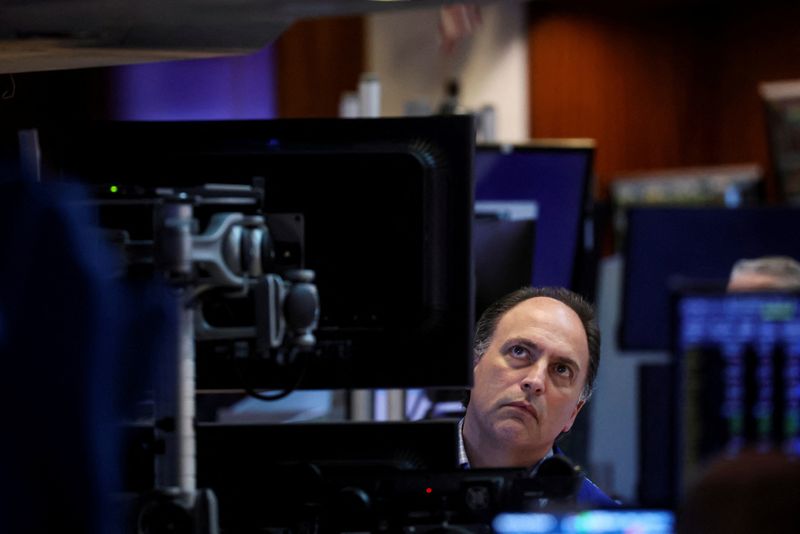TSX runs higher on rate cut expectations
By Noreen Burke
Investing.com -- After a week that saw financial markets rocked as central banks and governments ramped up their fight against inflation, investors will be bracing themselves for fresh volatility in the week ahead. Several Federal Reserve officials are due to speak, fresh off delivering their third straight 75 basis point rate hike with no let-up in sight. The highlight of the U.S. economic calendar will be Friday’s data on personal income and spending, which includes the Fed’s favored inflation gauge. In the Eurozone, Friday’s inflation data is likely to pile pressure onto the European Central Bank. Ahead of that, ECB President Christine Lagarde is due to testify before lawmakers in Brussels on Monday, while the results of Italy’s elections on Sunday will also be closely watched. The yen will remain in focus after the Bank of Japan intervened in foreign exchange markets. Meanwhile, Chinese PMI data on Friday will give an insight into the health of the world’s number two economy. Here’s what you need to know to start your week.
- Fedspeak, U.S. data
St. Louis Fed President James Bullard, Cleveland Fed President Loretta Mester, Chicago Fed head Charles Evans, Atlanta Fed President Raphael Bostic and Fed Vice Chair Lael Brainard are all due to speak during the week, with investors on the alert for indications of whether a fourth straight 75 bps rate hike is on the cards in November.
The economic calendar features reports on durable goods orders, consumer confidence, along with data on new and pending home sales.
The highlight of the economic calendar will be August data on personal income and expenditure on Friday which includes the personal consumption expenditures price index, the Fed’s preferred inflation measure.
Economists are expecting the annualized increase in the PCE price index to moderate because of recent declines in fuel costs, but the core PCE price gauge that excludes food and energy is expected to increase.
- Stock selloff
Wall Street's main indexes suffered heavy losses last week with the Nasdaq dropping 5.03% - its second straight week falling by more than 5% - while the S&P 500 ended down 4.77% and the Dow shed 4%.
The Dow only narrowly avoided joining the S&P 500 and the Nasdaq in a bear market.
A rout in bond markets added pressure on stocks as investors recalibrated their portfolios to a world of persistent inflation and rising interest rates. Investors were caught off guard after the Fed indicated last week it expects high U.S. rates to last through 2023.
While recent data has indicated that the U.S. economy remains comparatively strong, investors worry the Fed's tightening will tip the economy into a recession.
"We're having everyone reassess exactly how far the Fed will go, and that's troubling for the economy," Ed Moya, senior market analyst at OANDA, told Reuters on Friday.
"It's becoming the base case scenario that this economy is going to have a hard landing, and that is a terrible environment for U.S. stocks."
As well as tightening financial conditions around the world, market sentiment has been hard hit by a range of other issues including the Ukraine conflict, the energy crisis in Europe and China's COVID-19 flare-ups.
- Eurozone CPI
The Eurozone is to release September data on consumer price inflation on Friday with economists expecting the headline rate of inflation to accelerate to a fresh record high of 9.6%, keeping up pressure on the ECB as it grapples with how much to increase interest rates in the face of a looming recession.
Ahead of that, ECB President Christine Lagarde is due to testify before the Committee on Economic and Monetary Affairs in Brussels on Monday, where she will likely face questions on how the central bank plans to navigate the battle against inflation as the bloc faces the prospect of a recession.
Investors will also be watching the results of Italy’s election on Sunday which is expected to result in the country’s most right-wing government since World War II.
European Union leaders, keen to preserve unity after Russia's invasion of Ukraine, are concerned that Italy will be a more unpredictable partner, while financial markets will be concerned about the new government’s ability to manage a debt load that amounts to around 150% of GDP.
- Yen intervention
Japan's authorities finally had enough of weakness in the yen on Thursday when they intervened in foreign exchange markets for the first time since 1998.
The Japanese currency posted its first weekly gain of 0.3% in over a month against the dollar following the move.
But the dollar is up more than 20% on the yen this year with the Bank of Japan sticking to its commitment to ultra-low interest rates, while the Fed looks set to continue with aggressive rate hikes until inflation is in check.
So the case for a strong dollar remains. Japan, alongside neighbors China and Korea also pushing back on the dollar, may find itself fighting fundamentals, the market and the Fed.
BoJ Governor Haruhiko Kuroda is to make a speech on Monday where he is expected to give further insights into Japan’s decision to intervene.
- China PMIs
China is to release PMI data on Friday which will be closely watched for indications on whether the nascent economic recovery continued in September.
Recent economic data pointed to resilience in August, with faster-than-expected growth in factory output and retail sales shoring up a fragile recovery, but a deepening property slump weighed on the outlook.
With few signs China will significantly ease its zero-COVID policy soon, some analysts expect the world’s second largest economy to grow just 3% this year, which would be the slowest since 1976, excluding the 2.2% expansion during the initial COVID hit in 2020.
China has announced a broad range of economic support measures since late May but rapid declines in the Chinese yuan against the U.S. dollar have complicated the case for looser monetary support.
--Reuters contributed to this report
